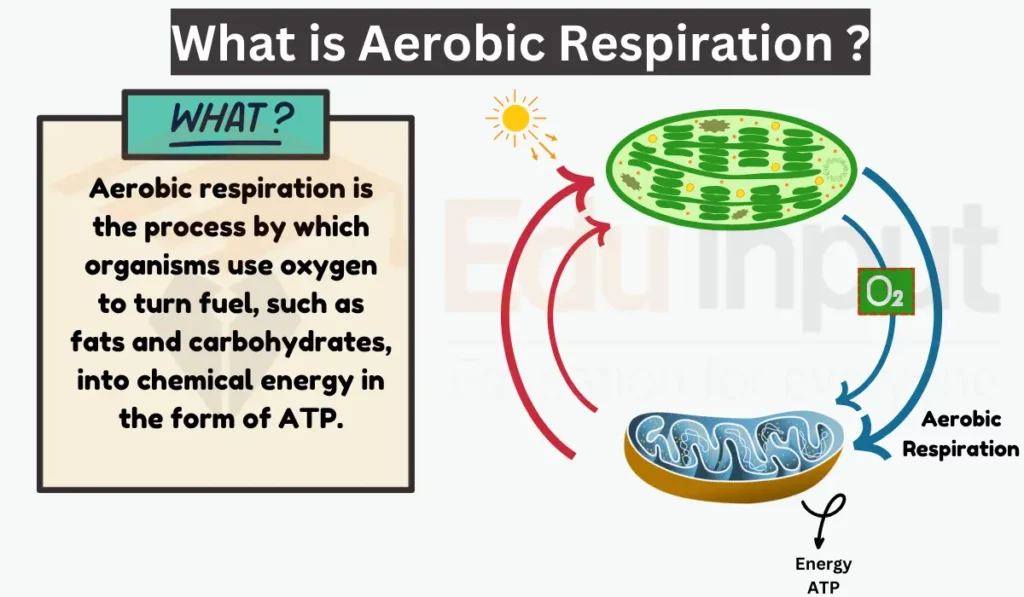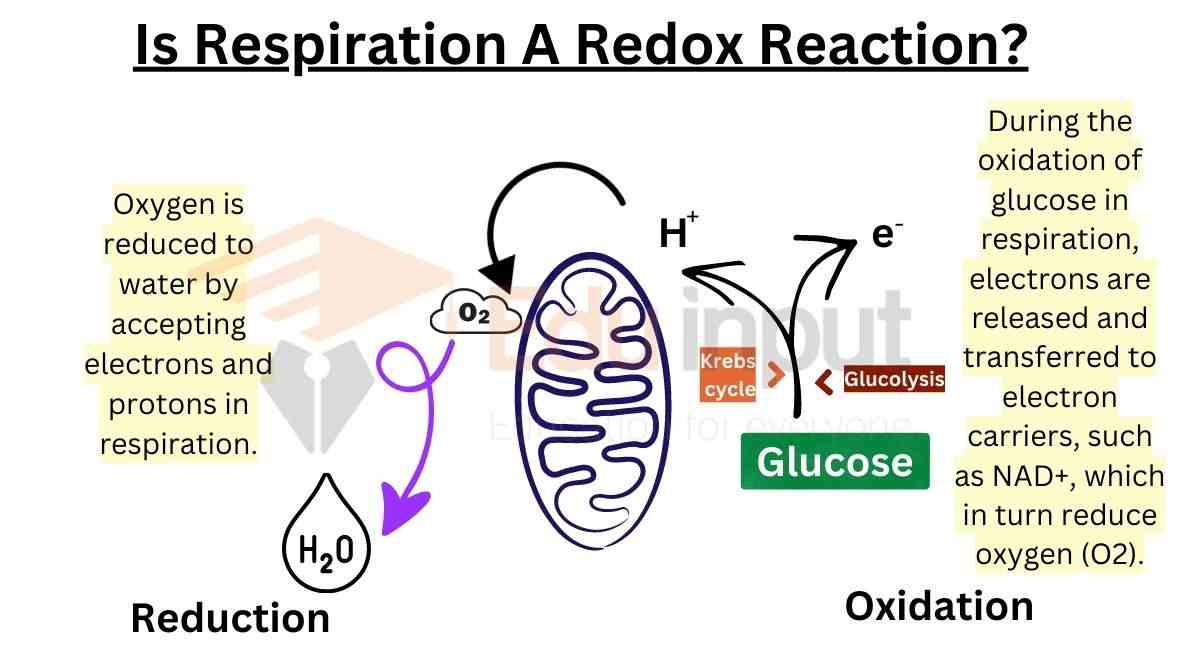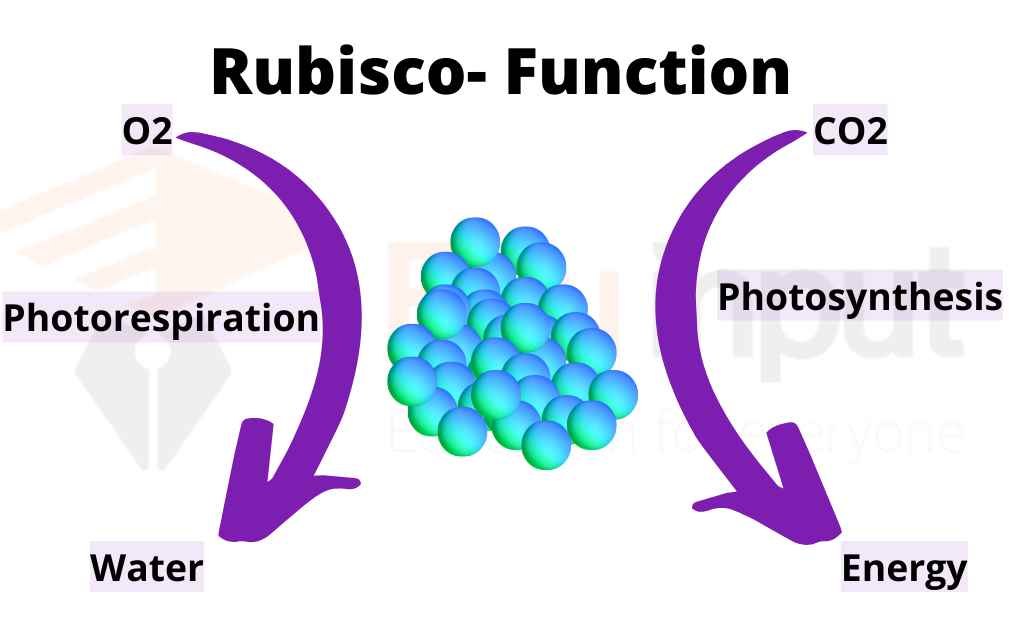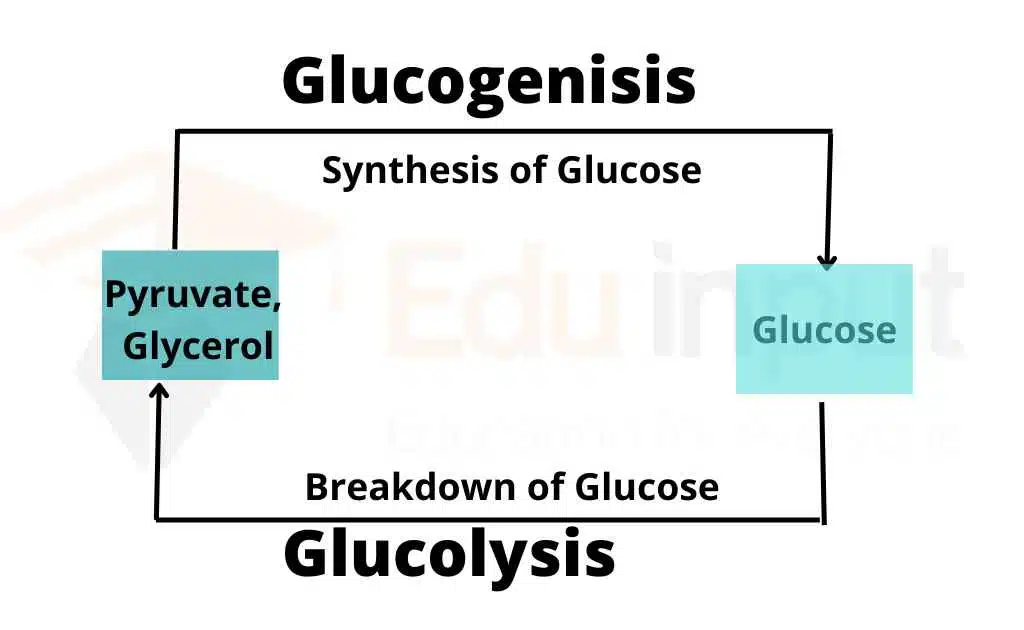Aerobic Respiration-Steps, Equation, Evolutionary Significance, and Examples
Aerobic respiration Definition
Aerobic respiration is a type of cellular respiration, by which Aerobic organisms use oxygen to turn fuel, such as fats and carbohydrates, into chemical energy in the form of ATP (adenosine triphosphate).

Reactants & Products of Aerobic Respiration
Here are the reactants and products of aerobic respiration:

Reactants
- Glucose: This simple sugar is often derived from carbohydrates. It serves as the fuel source for aerobic respiration. It contains energy in its molecular bonds.
- Oxygen: Important for the final stage, act as the terminal electron acceptor during the electron transport chain. The availability of oxygen determines if respiration proceeds aerobically.
Products
- ATP: The primary product and the main form of usable energy generated through respiration. The energy released during each stage is used to synthesize many molecules of ATP from ADP + Pi.
- Carbon dioxide: A gaseous waste product released during both the Krebs cycle and electron transport chain stages as fragments of glucose (pyruvate) are broken down.
- Water: Formed as a byproduct during the electron transport chain when oxygen is reduced, accepting electrons and protons to form water. Serves as another waste molecule.
Glucose and oxygen enter aerobic respiration, where glucose is broken down step-by-step and oxygen assists in efficient energy extraction for ATP production. Carbon dioxide and water are released as waste.
Reactants & Products of Each Stage of Aerobic Respiration
Here are the reactants and products of each stage:
1. Glycolysis
- Reactants: Glucose
- Products: 2 pyruvate molecules, 2 ATP molecules, 2 NADH molecules (energy carriers)
2. Krebs Cycle
- Reactants: 2 pyruvate molecules, NADH molecules, FADH2 molecules (another energy carrier)
- Products: 3 CO2 molecules, 1 GTP molecule (convertible to ATP), 1 NADH molecule, 1 FADH2 molecule
3. Electron Transport Chain
- Reactants: NADH molecules and FADH2 molecules from previous stages, Oxygen
- Products: ATP molecules, Water
Chemical Equation of Aerobic Respiration
Here is the balanced Chemical Equation of Aerobic Respiration:
Glucose + Oxygen -> Carbon dioxide + Water + Energy (ATP)
C6H12O6 + 6O2 -> 6CO2 + 6H2O + 36 ATP
Steps of Aerobic Respiration Process
Here are the key stages of aerobic respiration:
1: Glycolysis
Glycolysis involves a series of chemical reactions that break down each molecule of glucose into two molecules of pyruvate. It occurs in the cytoplasm and does not require oxygen.
Specific steps involve the phosphorylation of glucose by hexokinase, rearrangement of glucose-6-phosphate into fructose-6-phosphate by phosphoglucose isomerase, and further phosphorylation by phosphofructokinase.
Fructose 1,6-bisphosphate is then split into two 3-carbon molecules by aldolase. These molecules are further oxidized and converted into pyruvate.
Glycolysis generates a net gain of 2 ATP and 2 NADH per glucose molecule.
In the absence of oxygen, pyruvate can be converted into lactate by lactate dehydrogenase in a process called lactic acid fermentation. This allows glycolysis to continue but is much less efficient at producing ATP.
2: Krebs Cycle
Pyruvate is transported into the mitochondrial matrix and converted into a 2-carbon acetyl group attached to Coenzyme A, forming acetyl-CoA. This process involves the enzyme pyruvate dehydrogenase and releases CO2.
The 8 reactions of the cycle rearrange the acetyl group into different chemical forms, regenerate molecules used in the cycle, and reduce NAD+ and FAD to produce NADH and FADH2.
GTP is produced which can transfer phosphate to form ATP.
As a cycle, the original 2-carbon acetyl group from acetyl-CoA is released as CO2 over several steps, allowing the cycle to repeat.
This stage occurs aerobically in the mitochondria.
3: Electron Transport Chain
Protein complexes I-IV form an electron transport chain across the inner mitochondrial membrane. NADH and FADH2 donate electrons which get passed along the chain, powering proton pumps that establish a proton gradient.
ATP synthase uses this proton-motive force in a process called chemiosmosis to generate ATP as the protons flow back across the membrane.
Molecular oxygen serves as the final electron acceptor, getting reduced to water.
Numerous ATP molecules are produced very efficiently through oxidative phosphorylation coupled to the electron transport chain.
Enzymes in Aerobic Respiration
Here is the list of enzymes that are nvolved in Aerobic Respiration:
Enzymes Involved in Glycolysis (Cytoplasm)
- Hexokinase: Traps glucose by phosphorylation.
- Phosphofructokinase: Regulates glycolysis rate.
- Aldolase: Splits fructose 1,6-bisphosphate into glyceraldehyde 3-phosphate.
- Glyceraldehyde 3-phosphate dehydrogenase: Extracts energy, producing pyruvate, NADH, and ATP.
- Pyruvate kinase: Converts pyruvate to phosphoenolpyruvate, generating another ATP.
Enzymes Involved in Krebs Cycle (Mitochondria Matrix)
- Pyruvate dehydrogenase complex: Breaks down pyruvate with CO2 and NADH release.
- Citrate synthase: Combines acetyl-CoA with oxaloacetate for citrate formation.
- Isocitrate dehydrogenase: Oxidizes isocitrate, releasing CO2 and NADH.
- Alpha-ketoglutarate dehydrogenase complex: Similar to pyruvate dehydrogenase, releases CO2, NADH, and FADH2.
- Succinate dehydrogenase: Oxidizes succinate, generating FADH2.
- Cytochrome c oxidase: Finalizes the chain, creates proton gradient, and pumps protons for ATP synthesis.
Enzymes Involved in Electron Transport Chain (Mitochondria Inner Membrane)
- Complex I (NADH dehydrogenase): Transfers electrons from NADH to the chain.
- Complex II (Succinate dehydrogenase): Transfers electrons from FADH2 to the chain.
- Cytochrome c: Mobile protein shuttling electrons between complexes.
- Cytochrome c oxidase: Mentioned before, transfers electrons to oxygen for final step and proton gradient formation.
- ATP Synthase (Mitochondria Inner Membrane) – Utilizes the proton gradient from the electron transport chain to produce ATP.
Aerobic Respiration Examples
Here are 10 examples of organisms that rely on aerobic respiration:
- Humans – Occurs in every cell, converting food to ATP to power biological processes.
- Hummingbirds – Used by flight muscles to generate ATP needed for rapid wing movements and hovering.
- Trees – In mitochondria of cells, provides energy to grow, transport nutrients, and maintain life processes.
- Yeast – During fermentation, sugars are processed by aerobic respiration to obtain energy used in anaerobic reactions.
- Fungus – Breaks down dead organic matter and uses aerobic respiration to harvest energy from nutrients to support its own growth.
- Sprinter – High intensity sprints require large, rapid increases in ATP production through aerobic pathways in muscle cells.
- Salmon – Uses aerobic respiration while migrating upstream, converting fats/carbs to ATP to continually fuel swimming muscles.
- Venus flytraps – Power cell functions like plant movement, allowing traps to close quickly when digesting insect prey.
- Glowworms – Utilizes energy from aerobic respiration to undergo reactions generating light from specialized cells.
- Deep-sea bacteria – Leverage small amounts of oxygen from vents to perform aerobic respiration, generating energy.







Leave a Reply